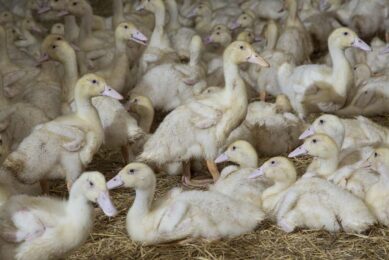WHO issues new AI guidelines
The World Health Organization (WHO) has developed pharmacological advice for the use of antiviral treatments for highly pathogenic avian influenza, according to a report in the January 2007 issue of The Lancet Infectious Diseases.
“Recent spread of avian influenza A (H5N1) virus to poultry and wild birds has increased the threat of human infections with H5N1 virus worldwide,” write Holger J. Schünemann, MD, and colleagues from the WHO Rapid Advice Guideline Panel on Avian Influenza.
“Despite international agreement to stockpile antivirals, evidence-based guidelines for their use do not exist.”
The WHO convened an international panel to develop evidence-based guidelines for pharmacological treatment of H5N1 patients, evaluating the benefits, harms, burden, and cost of interventions in several patient and exposure groups.
The group agreed on a number of strong recommendations relating to treatment of H5N1 patients in a non-pandemic situation:
Patients should receive oseltamivir treatment as soon as possible.
• If neuraminidase inhibitors are available, clinicians should not administer amantadine alone as a first-line treatment.
• If neuraminidase inhibitors are available, clinicians should not administer rimantadine alone as a first-line treatment.
• High-risk exposure groups should receive oseltamivir as chemoprophylaxis continuing for 7 to 10 days after the last known exposure.
• If neuraminidase inhibitors are available, clinicians should not administer rimantadine alone as a first-line treatment.
• High-risk exposure groups should receive oseltamivir as chemoprophylaxis continuing for 7 to 10 days after the last known exposure.
The WHO conceded that the quality of the evidence used for determining these recommendation was very low, because it was based on small case series of H5N1 patients.
“Emergence of other novel influenza A viral subtypes with pandemic potential, or changes in the pathogenicity of H5N1 virus strains, will require an update of these guidelines and WHO will be monitoring this closely,” the guidelines note.
“Of all influenza A viruses circulating in birds, H5N1 is currently of greatest public-health concern because it has caused severe and fatal human infections with mortality ranging from 33% to over 50% since the first known outbreak in Hong Kong in 1997. The spread of H5N1 in poultry and wild birds in many countries has raised concerns about the increased risk of transmission of H5N1 virus to human beings.”
Join 31,000+ subscribers
Subscribe to our newsletter to stay updated about all the need-to-know content in the poultry sector, three times a week. Beheer
Beheer








 WP Admin
WP Admin  Bewerk bericht
Bewerk bericht